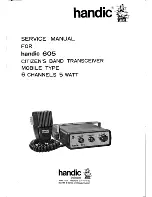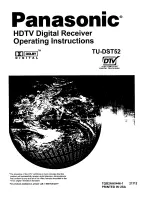
10 GigE IP Mini-Converters SMPTE 2110 IP Transmit/Receive v2.2r1 43 www.aja.com
System Modes
There is a set of pre-built system configuration modes, or "system modes,"
available from the System Mode control on the Config page of the IPR-10G2 web
UI. These pre-built System Modes are designed to save you time so that you can
get your unit up and running quickly.
NOTE: The System Modes are available only for the IPR units; they are not found on the
IPT units.
NOTE: Like the IPR-10G2-HDMI and IPR-10G2-SDI, the IPR-10G-HDMI has the System
Modes. However, since the 10G model does not have dual stream redundancy, it
does not offer the highest level of packet-level protection. It can re-order packets
into the correct order and provide Frame Sync, but it does not have the second
stream input for signal stream redundancy, nor does single stream mode provide
any dropped packet protection.
Each System Mode is built for a specific type of use case, taking into account
factors such as network conditions, protection requirements, timing, and latency
considerations.
NOTE: The choice of System Mode will impact which controls are available. Multiple
variations of controls are possible on the Config page.
The following tables present the core characteristics for each pre-built System
Mode.
Table 1. PTP Low Latency System Mode characteristics
System Mode 1
PTP Low Latency
Description
PTP environment
Lowest protection*
Near-zero latency**
Video Clock Mode
PTP
Packet Protection Mode
Bypass
Frame Sync Mode
Bypass
Audio Sample Rate Converter
Bypass
Transmitter Requirements
Narrow transmitter only
Latency Expected
0 frames (~4 video lines)
Table 2. PTP Protected System Mode characteristics
System Mode 2
PTP Protected
Description
PTP environment
Greatest protection*
Maximum latency**
Video Clock Mode
PTP
Packet Protection Mode
Enabled
Frame Sync Mode
Enabled
Audio Sample Rate Converter
Bypass
Transmitter Requirements
Can accept wide transmitter
Latency Expected
Packet protection window size +2 frames
















































